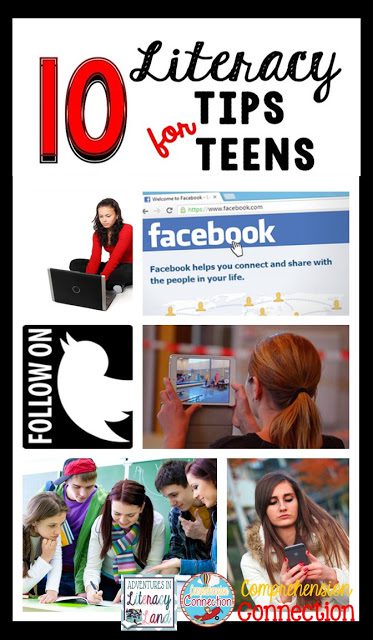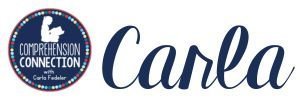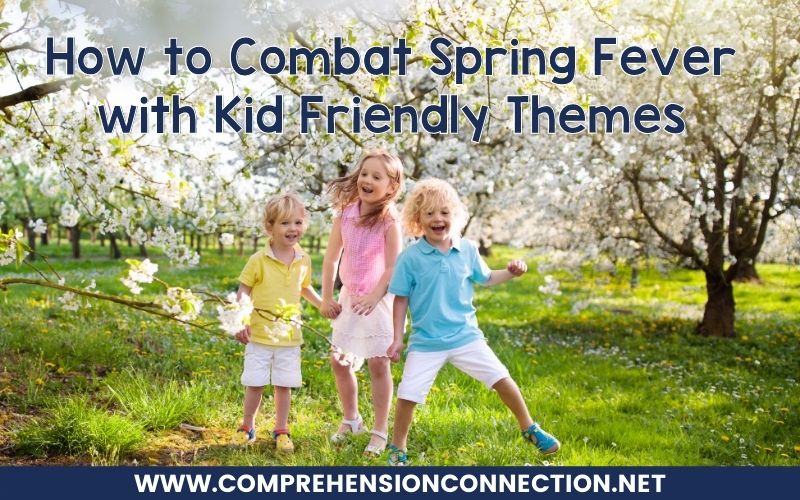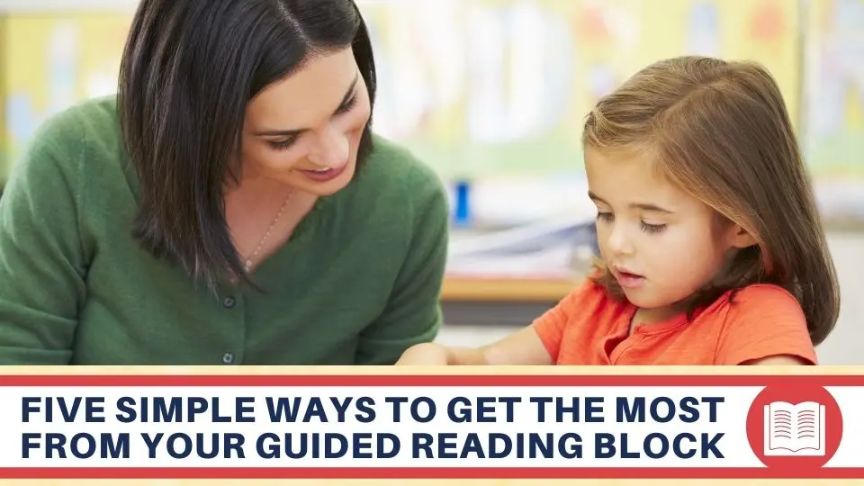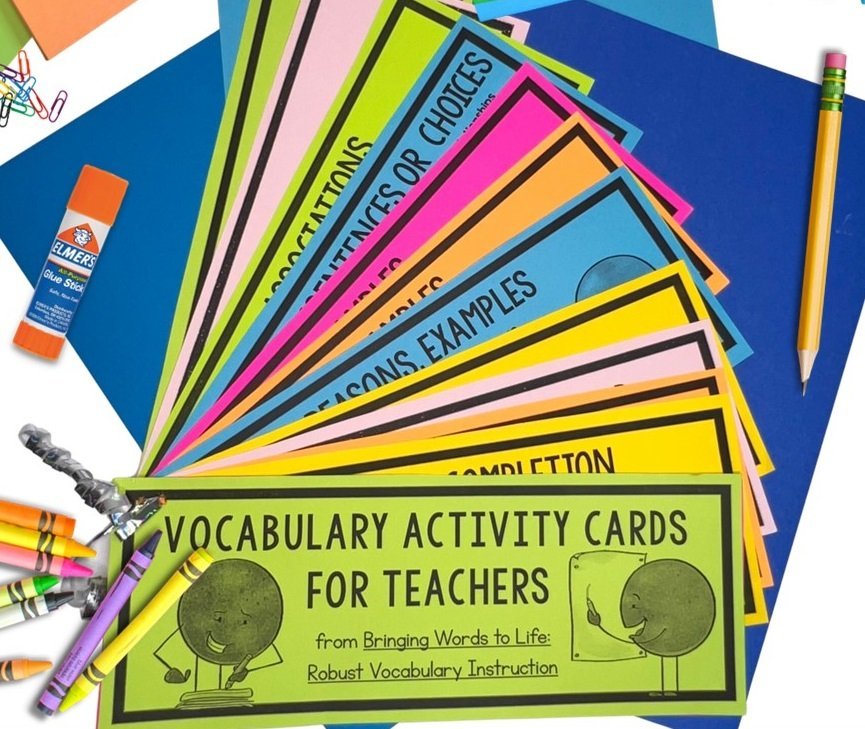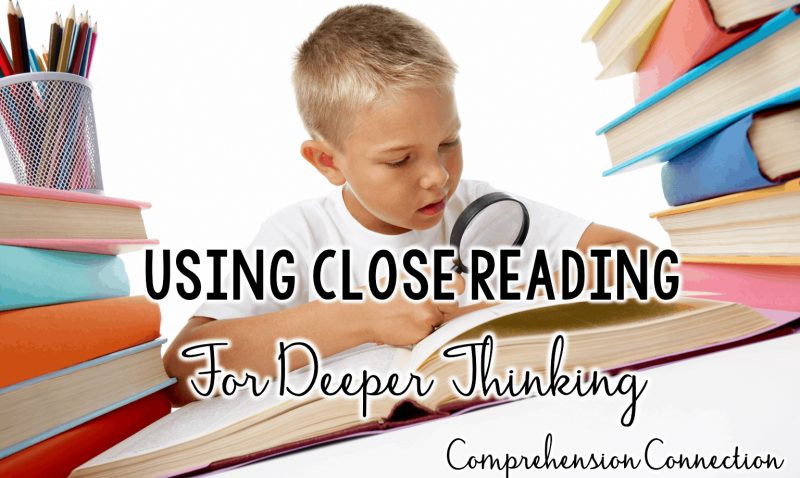
Looking for literacy tips for teens? Chances are the kids in this image look familiar to you. Perhaps you’ve noticed that teens are very tech savvy often listening to music while they’re working on a paper for English, sending messages to friends through Snapchat, and checking the latest game scores on ESPN. Yes, our teens are multi-taskers to the extreme, and if you are teaching them, then chances are you’ve become pretty tech savvy yourself and observed these and many other teen behaviors.
Young Adult LIterature traits:
Today, I am going to share with you information and tips from the literacy perspective, but before I can get to the tips, I think it’s important to share the characteristics of young adult literature to see how these characteristics mesh with the characteristics of teens today. It will help us understand the reason Hunger Games, The Maze Runner, and The Fault in Our Stars are so popular with teens today. YA books are…
- Stories are told from the viewpoint of young people.
- Young adult stories often get rid of all adult figures.
- Young adult literature is fast-paced and often edgy.
- Young adult literature includes a variety of genres and subjects.
- Characters come from many different cultural and ethnic groups.
- Young adult books are optimistic and characters make worthy accomplishments.
- Young adult novels deal with real emotions.
Classroom Libraries for teens
Do these traits seems to be found in the examples in your classroom library or more importantly, are they included in the novels you’ve chosen for your class to study? You see, these traits need to be honored in order to fully motivate our teen. Believe it or not, these traits actually start for our students in fourth grade, and young adult literature extends for students until they reach age nineteen.Another important consideration for the adolescent reader is the mindset of a teen. Teens today often demonstrate the following behaviors (and perhaps you can think of more).
- Want to be independent. Can be emotional and/or rebellious.
- They can be risk takers and their energy level fluctuates.
- Maturing, so they do not care for parental involvement. Friends are very important.
- They are *very* social.
- They are often ambitious and idealistic.
- They tend to be a little more self-centered.
Again, you may have other behaviors you’d add, or some you’d take away. This book by Gay Ivey and Douglas Fisher has great advice, and I’d highly recommend checking it out for professional development. It is the basis of some of these teaching tips.

Literacy tips for teens #1: Choose your books wisely.
Try not to stick with the same books you’ve read for the past twenty years. Yes, there are some classics that every student should read, but there are so many new authors putting out great quality. One of the most motivating ways to teach is to allow student input. Students appreciate choice at this age, so having multiple books on a theme where students can select the book that appeals to him/her will lead to increased interest in the classroom activities and perhaps more effort with assigned work. Gone are the days of whole class novel reading. According to Ivy and Fisher, “This one-size-fits-all approach to the curriculum does not respond to the unique needs, strengths, or interests of adolescents.” To assist in making this leap, schools should extend the book room option into the middle and high school levels. Teachers also need extensive classroom libraries for independent reading as well.
literacy tips for teens #2: keep it social.
Remember that teens love to talk, and through rich discussion, students work at the higher levels of Blooms by analyzing the text, finding text evidence to justify responses, and by digging into the author’s message, etc.
Literacy tips for teens #3: TAP INTO THE ENTHUSIASM FOR TECH.
There are so many great tech options we can use. From creating a Facebook page for the main character in your novel to running a classroom blog for book discussions to producing group videos, the tech options are almost endless. Today’s teacher needs to embrace technology and use it as the medium for content delivery.
literacy tips for teens #4: weave in the writing
Writing should be part of each lesson, but not every written piece of work needs to go through the writing process. Students gain writing skills through informal writing opportunities. Graphic organizers, interactive notebooks, and lapbooks are commonplace in most elementary classrooms, and these strategies can easily work for middle and high school students too. Having students keep dialogue journals or respond to the reading with a quick letter to the main character are examples of writing assignments you might use.
literacy tips for teens #5: keep things current.
Reading material isn’t limited to books and articles. Be sure to include what’s relevant to your students. The kids are interested in reading about who’s popular in music and the movies, so including song lyrics and movie clips to model skills in your pacing guide will increase student engagement.
#6: Use group projects as a way to include higher level thinking skills
If you have multiple book options going in your classroom, one way to manage it is to put the students in charge of their learning. Reciprocal Teaching is a great teaching strategy to use with your books and can lead to wonderful group discussions. Group projects are fun too, and they take advantage of the fact that middle school and high school students want to be social. Careful matching of groups advised.
#7: Varying teaching strategies ensures that students’ independent needs are addressed.
Ivey and Fisher describe well a huge number of teaching strategies such as Cornell Note Taking, anticipation guides, concept maps, quick writes, and many other options. Explicit teaching of strategies through read alouds scaffolds instruction for students and provides a gradual release for them to apply the strategy use independently. [These websites] offer a tech option that may work for teens. When I spoke with one of my friends who teaches English locally, she shared that her students enjoy using Twitter in the classroom. GroupTweet may work for you unless you have a firewall that blocks it. If that is the case, then give TodaysMeet a try. It is a free website, and either offer great discussion opportunities.
Literacy tips for teens #8: Make independent reading a non-negotiable.
Many students hit middle school, and stop reading. This is particularly true with boys, so we need to expect our students to read and hold them accountable. Donalyn Miller’s books, The Book Whisperer and Reading in the Wild are two that I’ve read and recommend. They offer up options for goal setting and monitoring of independent reading. I blogged recently on my own blog about book talks, and this concept certainly would work for any grade level. My friend, Michelle at Big Time Literacy blogged about books for independent reading, and [this post] from her blog would be very helpful as you think about how to manage independent reading and most importantly, matching text to the child.
#9 Don’t rule out teaching strategies that seem like ideas for elementary.
Using Reader’s Theater or picture books for modeling may seem like elementary stuff, but there are high level picture books with rich language that may work well for modeling literary devices. Reader’s Theater is a wonderful option for increased engagement and provides an alternative text. Students work on oral reading fluency without attaching a stigma. Having your students write scripts based upon their reading covers multiple skills…oral reading, comprehension, and writing.
literacy tips for teens #10: Seek your students’ input.
Teens want to be heard, and they want to have a little power. If we are to get teens to buy in, we have to hear their voices. Start the year with a survey. Ask your students how they learn best and try to include those ideas into your routine. Again, give them options for reading materials, and get feedback from them throughout the year. Yes, it will take a little management expertise and prep time, but the reward of kids enjoying the learning process, digging in deeper with their reading, and exchanging ideas with their peers is worth the time. Reaching out to colleagues to plan as a team may help too.
I hope these ten tips are on the mark, but if some fall short, please know I’ve done my best. If you enjoyed this post and want to save it for later, here’s an image you can use.
Have a great week!
